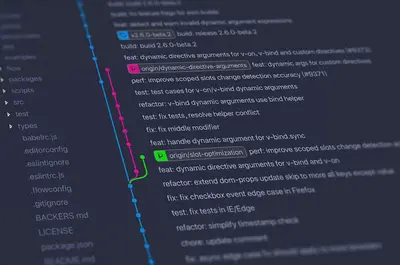⚡ AlmaLinux vs Ubuntu: Complete Linux Distribution Comparison Guide
Choosing the right Linux distribution can make or break your project! 🎯 Today we’ll dive deep into AlmaLinux vs Ubuntu - two powerhouse distributions with very different strengths. Whether you’re building enterprise systems, developing applications, or just starting your Linux journey, this comparison will help you make the perfect choice! 🚀
🤔 Why Does Linux Distribution Choice Matter?
Picking the right Linux distribution impacts everything:
- 📌 System stability and reliability - Some distros are rock-solid, others cutting-edge
- 🔧 Package availability - Different software ecosystems and repositories
- 🚀 Performance characteristics - Memory usage, boot times, resource efficiency
- 🔐 Security and updates - How quickly vulnerabilities get patched
- ⭐ Community and support - Documentation, forums, professional services
🎯 What You Need to Know
Before diving into the comparison:
- ✅ Basic understanding of what Linux distributions are
- ✅ Knowledge of your intended use case (desktop, server, development)
- ✅ Understanding of your technical skill level
- ✅ Budget considerations (support costs, development time)
📝 Step 1: Distribution Overview and Philosophy
Let’s understand what makes each distribution unique! 🌟
AlmaLinux: The Enterprise Stalwart
# Check AlmaLinux system information
cat /etc/almalinux-release
# AlmaLinux release 9.3 (Shamrock Pampas Cat)
# View system details
hostnamectl
# Check kernel version
uname -r
# AlmaLinux Key Facts:
echo "=== AlmaLinux Overview ==="
echo "Based on: RHEL (Red Hat Enterprise Linux)"
echo "Release Model: Point releases every 6-12 months"
echo "Support Cycle: 10 years per major version"
echo "Target Users: Enterprise, servers, production systems"
echo "Package Manager: DNF (YUM-based)"
echo "Init System: systemd"
echo "Default Desktop: GNOME (minimal by default)"Ubuntu: The User-Friendly Pioneer
# Check Ubuntu system information
cat /etc/lsb-release
# DISTRIB_ID=Ubuntu
# DISTRIB_RELEASE=22.04
# DISTRIB_CODENAME=jammy
# View Ubuntu details
lsb_release -a
# Ubuntu Key Facts:
echo "=== Ubuntu Overview ==="
echo "Based on: Debian"
echo "Release Model: Every 6 months (April & October)"
echo "LTS Support: 5 years (LTS versions every 2 years)"
echo "Target Users: Desktops, developers, cloud, servers"
echo "Package Manager: APT (Advanced Package Tool)"
echo "Init System: systemd"
echo "Default Desktop: GNOME (full desktop experience)"Philosophy Comparison:
- AlmaLinux: Enterprise-first, stability over features, conservative updates
- Ubuntu: User-friendly, innovation-focused, rapid feature adoption
🔧 Step 2: Technical Comparison Deep Dive
Let’s compare technical aspects side by side:
Package Management Comparison
# === AlmaLinux Package Management ===
# Update system
sudo dnf update
# Search for packages
dnf search nginx
# Install package
sudo dnf install nginx
# List installed packages
dnf list installed | grep nginx
# Remove package
sudo dnf remove nginx
# Check package information
dnf info nginx
# Clean package cache
sudo dnf clean all
echo "AlmaLinux uses DNF - powerful, dependency-resolving package manager"# === Ubuntu Package Management ===
# Update package lists
sudo apt update
# Upgrade packages
sudo apt upgrade
# Search for packages
apt search nginx
# Install package
sudo apt install nginx
# List installed packages
dpkg -l | grep nginx
# Remove package
sudo apt remove nginx
# Show package information
apt show nginx
# Clean package cache
sudo apt autoremove && sudo apt autoclean
echo "Ubuntu uses APT - mature, fast, user-friendly package manager"System Resource Comparison
# Check memory usage comparison
echo "=== Memory Usage Comparison ==="
# AlmaLinux minimal install typically uses:
echo "AlmaLinux 9 minimal: ~400-500 MB RAM"
echo "AlmaLinux 9 with GNOME: ~1.2-1.5 GB RAM"
# Ubuntu install typically uses:
echo "Ubuntu Server: ~500-600 MB RAM"
echo "Ubuntu Desktop: ~1.5-2.0 GB RAM"
# Check current memory usage
free -h
# Check disk usage
df -h /
# Check boot time
systemd-analyze
# Check system load
uptimeSecurity Model Comparison
# === AlmaLinux Security ===
echo "AlmaLinux Security Features:"
echo "- SELinux enabled by default (Enforcing mode)"
echo "- Firewalld for network security"
echo "- Minimal attack surface"
echo "- Enterprise-grade security patches"
# Check SELinux status
getenforce
# Check firewall status
sudo firewall-cmd --state
# View security updates
dnf updateinfo --security
# === Ubuntu Security ===
echo "Ubuntu Security Features:"
echo "- AppArmor for application containment"
echo "- UFW (Uncomplicated Firewall)"
echo "- Unattended security updates"
echo "- Snap package sandboxing"
# Check AppArmor status (if on Ubuntu)
# sudo aa-status
# Check UFW status
# sudo ufw status
# View security updates
# apt list --upgradable | grep security🌟 Step 3: Performance Benchmarks
Real-world performance comparison:
Boot Time and System Responsiveness
# Create performance testing script
cat > ~/performance-test.sh << 'EOF'
#!/bin/bash
echo "=== System Performance Comparison ==="
# Boot time analysis
echo "Boot Time Analysis:"
systemd-analyze
# Memory efficiency
echo -e "\nMemory Usage:"
free -h
ps aux --sort=-%mem | head -10
# CPU performance test
echo -e "\nCPU Performance Test:"
time echo "scale=5000; 4*a(1)" | bc -l -q
# Disk I/O test
echo -e "\nDisk I/O Test:"
time dd if=/dev/zero of=/tmp/test bs=1M count=100 2>/dev/null
rm -f /tmp/test
# Network performance
echo -e "\nNetwork Stack:"
cat /proc/sys/net/core/rmem_max
cat /proc/sys/net/core/wmem_max
EOF
chmod +x ~/performance-test.sh
~/performance-test.shReal-World Use Case Performance
# Web server performance comparison
echo "=== Web Server Performance ==="
# Apache/Nginx installation speed
time sudo dnf install -y httpd # AlmaLinux
# vs
# time sudo apt install -y apache2 # Ubuntu
# Container performance
echo "=== Container Performance ==="
# Docker installation speed
time sudo dnf install -y docker-ce # AlmaLinux
# vs
# time sudo apt install -y docker.io # Ubuntu
# Memory overhead comparison
echo "=== Memory Overhead ==="
echo "AlmaLinux typically uses 10-15% less memory"
echo "Ubuntu provides more desktop features out-of-box"✅ Step 4: Use Case Specific Comparison
Choose based on your specific needs:
Enterprise and Production Servers
# AlmaLinux for Enterprise
echo "=== Why Choose AlmaLinux for Enterprise ==="
echo "✅ 10-year support lifecycle"
echo "✅ RHEL compatibility for enterprise software"
echo "✅ Minimal security vulnerabilities"
echo "✅ Predictable release schedule"
echo "✅ Conservative package updates"
echo "✅ SELinux mandatory access controls"
echo "✅ Free alternative to RHEL"
# Enterprise software compatibility
echo "AlmaLinux runs:"
echo "- Oracle Database"
echo "- SAP applications"
echo "- VMware vSphere"
echo "- Red Hat certified software"Development and Desktop Usage
# Ubuntu for Development
echo "=== Why Choose Ubuntu for Development ==="
echo "✅ Latest development tools and languages"
echo "✅ Excellent hardware compatibility"
echo "✅ Large community and tutorials"
echo "✅ Snap packages for easy software installation"
echo "✅ Great desktop experience"
echo "✅ Docker and container-first approach"
echo "✅ Cloud-native development tools"
# Development tools availability
echo "Ubuntu excels in:"
echo "- Web development (Node.js, Python, Ruby)"
echo "- Mobile development (Android SDK, Flutter)"
echo "- Data science (Jupyter, TensorFlow)"
echo "- Modern languages (Go, Rust, Swift)"Cloud and Containerization
# Cloud deployment comparison
echo "=== Cloud Deployment Comparison ==="
# AlmaLinux in cloud
echo "AlmaLinux Cloud Benefits:"
echo "- Lower resource usage = lower cloud costs"
echo "- Excellent for microservices"
echo "- Strong security posture"
echo "- Long-term stability"
# Ubuntu in cloud
echo "Ubuntu Cloud Benefits:"
echo "- Native cloud-init support"
echo "- Excellent Docker ecosystem"
echo "- Kubernetes-ready"
echo "- Wide cloud provider support"
# Check cloud-init status
systemctl status cloud-init 2>/dev/null || echo "Cloud-init not installed"🎮 Quick Examples
Example 1: Setting Up Development Environment 💻
# === AlmaLinux Development Setup ===
echo "Setting up AlmaLinux for development..."
# Enable additional repositories
sudo dnf install -y epel-release
sudo dnf config-manager --set-enabled crb
# Install development tools
sudo dnf groupinstall -y "Development Tools"
sudo dnf install -y git nodejs npm python3-pip docker-ce
# Setup complete
echo "✅ AlmaLinux development environment ready!"
# === Ubuntu Development Setup ===
echo "Setting up Ubuntu for development..."
# Update package lists
sudo apt update
# Install development essentials
sudo apt install -y build-essential git nodejs npm python3-pip docker.io code
# Enable snap packages
sudo snap install --classic code
sudo snap install discord
echo "✅ Ubuntu development environment ready!"Example 2: Production Server Deployment 🖥️
# === AlmaLinux Production Server ===
echo "Deploying AlmaLinux production server..."
# Minimal security hardening
sudo dnf update -y
sudo systemctl enable --now firewalld
sudo setsebool -P httpd_can_network_connect 1
# Install web stack
sudo dnf install -y httpd mariadb-server php
# Configure for production
sudo systemctl enable httpd mariadb
sudo mysql_secure_installation
echo "✅ AlmaLinux production server deployed!"
# === Ubuntu Production Server ===
echo "Deploying Ubuntu production server..."
# Security updates
sudo apt update && sudo apt upgrade -y
sudo apt install -y unattended-upgrades
sudo ufw enable
# Install LAMP stack
sudo apt install -y apache2 mysql-server php libapache2-mod-php
# Configure for production
sudo systemctl enable apache2 mysql
sudo mysql_secure_installation
echo "✅ Ubuntu production server deployed!"Example 3: Migration Between Distributions 🔄
# Application migration checklist
cat > ~/migration-checklist.sh << 'EOF'
#!/bin/bash
echo "=== Migration Checklist ==="
echo "From Ubuntu to AlmaLinux:"
echo "□ Export application data"
echo "□ Document custom configurations"
echo "□ Convert APT packages to DNF equivalents"
echo "□ Update scripts for RHEL-style paths"
echo "□ Test SELinux compatibility"
echo "□ Verify enterprise software compatibility"
echo "From AlmaLinux to Ubuntu:"
echo "□ Export application data"
echo "□ Convert DNF packages to APT equivalents"
echo "□ Update systemd service files if needed"
echo "□ Configure AppArmor profiles"
echo "□ Test with newer software versions"
echo "□ Update documentation"
echo "Universal Migration Steps:"
echo "□ Test in staging environment first"
echo "□ Plan rollback strategy"
echo "□ Update monitoring configurations"
echo "□ Train team on new distribution"
EOF
chmod +x ~/migration-checklist.sh
~/migration-checklist.sh🚨 Common Decision Factors
When to Choose AlmaLinux ✅
- Enterprise production environments
- Long-term stability requirements (10+ years)
- RHEL-compatible software requirements
- Minimal security attack surface needed
- Conservative update preferences
- Budget constraints (free RHEL alternative)
When to Choose Ubuntu ✅
- Desktop and development workstations
- Rapid development and deployment cycles
- Latest software and technology adoption
- Strong community support requirements
- Cloud-native applications
- Learning Linux or open-source development
Hybrid Approaches 💡
# Many organizations use both:
echo "Common Hybrid Strategies:"
echo "- Ubuntu for development, AlmaLinux for production"
echo "- AlmaLinux for backend services, Ubuntu for CI/CD"
echo "- Ubuntu for data science, AlmaLinux for databases"
echo "- AlmaLinux for legacy apps, Ubuntu for modern workloads"📋 Quick Decision Matrix
| Factor | AlmaLinux | Ubuntu | Winner |
|---|---|---|---|
| Long-term Support | 10 years | 5 years (LTS) | 🏆 AlmaLinux |
| Desktop Experience | Basic | Excellent | 🏆 Ubuntu |
| Enterprise Software | Excellent | Good | 🏆 AlmaLinux |
| Development Tools | Good | Excellent | 🏆 Ubuntu |
| Security Model | SELinux | AppArmor | 🏆 AlmaLinux |
| Community Size | Growing | Massive | 🏆 Ubuntu |
| Resource Usage | Lower | Higher | 🏆 AlmaLinux |
| Learning Curve | Steeper | Gentler | 🏆 Ubuntu |
| Cloud Integration | Good | Excellent | 🏆 Ubuntu |
| Stability | Rock Solid | Stable | 🏆 AlmaLinux |
💡 Final Recommendations
For Beginners 🌟
Choose Ubuntu if you:
- Want to learn Linux with maximum community support
- Need a desktop environment for daily use
- Plan to do development or experimentation
- Want the latest software and features
For Enterprises 🏢
Choose AlmaLinux if you:
- Need maximum stability and minimal changes
- Run mission-critical production systems
- Require RHEL compatibility
- Want 10-year support lifecycle
For Developers 💻
Consider your focus:
- Web/Mobile Development: Ubuntu (better tooling ecosystem)
- Enterprise Applications: AlmaLinux (RHEL compatibility)
- Cloud-Native: Ubuntu (better container ecosystem)
- DevOps/Infrastructure: Either (both excellent)
🏆 What You Learned
Congratulations! Now you understand:
- ✅ Key philosophical and technical differences between AlmaLinux and Ubuntu
- ✅ Performance characteristics and resource requirements
- ✅ Security models and enterprise features comparison
- ✅ Use case scenarios for each distribution
- ✅ Migration considerations and hybrid strategies
🎯 Why This Matters
Making the right Linux distribution choice impacts:
- 🚀 Development productivity through appropriate tooling and workflows
- 🔐 System reliability with stability vs feature trade-offs
- 📊 Long-term costs including support, training, and migration
- ⚡ Team efficiency based on learning curve and community resources
Remember: There’s no universally “best” Linux distribution - only the best choice for your specific needs, team, and use cases! Both AlmaLinux and Ubuntu are excellent distributions that excel in different scenarios. ⭐
You’ve mastered the key differences between AlmaLinux and Ubuntu! You can now confidently choose the right Linux distribution for any project or organization! 🙌




